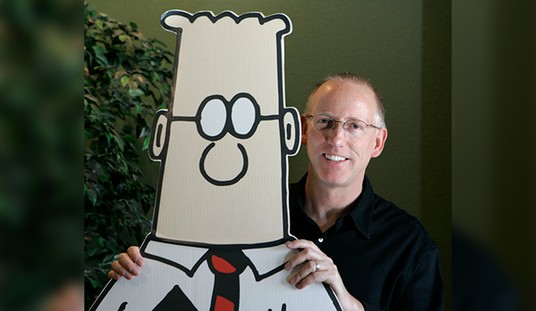Sarah Palin lost her libel case against the NY Times back in February 2022. There was a jury in that trial but the day before they reached their verdict the judge announced that he would toss the case regardless of their verdict.
A jury ruled against Sarah Palin in her libel case against the New York Times, one day after the judge said he would toss out her claim, saying she had not met the high legal standard required in libel cases involving public figures and journalists.
The jury’s decision conforms with the one made by U.S. District Court Judge Jed S. Rakoff. On Monday, he told lawyers for Palin and the Times that he would formally dismiss the former Alaska governor’s claim once the jury returned its verdict.
This is known as a Rule 50 judgment. And as Erik Wemple at the Washington Post noted at the time, there was a potential conflict of interest in the judge's request that the jurors not talk to the media after the trial. He had announced his decision the day before the jury reached theirs, but the jury in this case was not sequestered, meaning they could easily have learned about his decision before taking their own vote. Any reporter would have likely asked if the judge's announcement impacted the jury's deliberations, so the judge's decision to strongly discourage any contact with the media seemed a bit self-serving.
It should be pointed out here that Rakoff has a bit of conflict here: He announced a directed verdict while the jury was deliberating, and it's possible that a juror could disclose that they knew about his conclusion.
— ErikWemple (@ErikWemple) February 15, 2022
In any case, today we learned that Sarah Palin is going to get a second bite at this particular apple. A federal appeals court ruled in her favor, finding that the way the case was handled by the lower court was in error. As the court points out, this is the second time the have reinstated this case.
We first reinstated the case in August 2019 following an initial dismissal by the district court (Rakoff, J.) under Federal Rule of Civil Procedure 12(b)(6). Palin’s claim was subsequently tried before a jury but, while the jury was deliberating, the district court dismissed the case again—this time under Federal Rule of Civil Procedure 50. We conclude that the district court’s Rule 50 ruling improperly intruded on the province of the jury by making credibility determinations, weighing evidence, and ignoring facts or inferences that a reasonable juror could plausibly have found to support Palin’s case.
Despite the district court’s Rule 50 dismissal, the jury was allowed to reach a verdict, and it found the Times and Bennet “not liable.” Unfortunately, several major issues at trial—specifically, the erroneous exclusion of evidence, an inaccurate jury instruction, a legally erroneous response to a mid-deliberation jury question, and jurors learning during deliberations of the district court’s Rule 50 dismissal ruling—impugn the reliability of that verdict.
The appeals court decision goes over all of the details of the case again. I won't go into all of that because we've covered it many times before, but eventually the ruling circles back to the fact that jurors did know about the judge's decision to toss the case prior to rendering their own decision.
Later that evening, the district judge’s law clerk interviewed jurors to see if they had any problems understanding the court’s legal instructions during trial. Such interviews are the district judge’s “uniform practice,” “so that improvements can be made in future cases.” In these interviews, “several” jurors reported that, prior to rendering the verdict, they had learned that the court had made a Rule 50 determination in favor of the defendants via “involuntarily received ‘push notifications’ on their smartphones.” The law clerk reported this information to the district judge.
The record does not establish how many jurors received such notifications or at what time before the jury returned its verdict the notifications were received. It is also unknown from which news outlets jurors received push notifications and precisely what the notifications said.
The bottom line in this case is whether Palin can meet the threshold established by the Sullivan decision, i.e. she has to prove there was actual malice or at least reckless disregard for the truth. The appeals court ruled that the judge was in error when he rendered the Rule 50 dismissal in advance of the jury's verdict. [emphasis added]
The district court based its judgment for defendants solely on its conclusion that, as a matter of law, the trial evidence was insufficient to permit a jury to find that the defendants acted with actual malice. We disagree with that conclusion. After reviewing the record and making all reasonable inferences in Palin’s favor as the nonmoving party, we conclude that there exists sufficient evidence, detailed below, for a reasonable jury to find actual malice by clear and convincing evidence.
The ruling then points to a specific statement by Bennet under cross that could be read as an admission of malice.
During cross-examination by the defense, defendant Bennet, who was called as a witness by the plaintiff, stated what could be plausibly viewed as an admission: “I didn’t think then and don’t think now that the [crosshairs] map caused Jared Loughner to act.” But the district court dismissed out of hand the possibility that Bennet’s statement could be viewed as an admission supporting a finding of actual malice. The district court concluded that such an interpretation was “not a reasonable reading of Bennet’s answer and . . . would be inconsistent with [his] testimony overall.”
Crediting Bennet’s explanation that he did not intend to convey in the editorial that the crosshairs map directly caused Loughner to act, the district court interpreted Bennet’s “admission” to be merely a statement that the question of whether the crosshairs map spurred Loughner’s attack never entered his mind.
But in deciding a Rule 50 motion, a district court may not credit the movant’s self-serving explanations or adopt possible exculpatory interpretations on his behalf when interpretations to the contrary exist. Furthermore, the district court was plainly incorrect to conclude that Bennet’s testimony cannot “reasonabl[y]” be understood to “indicate[] that Bennet did not believe that what he was writing was true.” Bennet’s statement—that he “didn’t think,” when revising the editorial, that “the [crosshairs] map caused Jared Loughner to act”—can permissibly be read to suggest that Bennet entertained serious doubts as to his assertion that the map and shooting had a “clear” and “direct” “link.”...The jury may ultimately accept the district court's understanding of Bennet’s words—but, as we previously cautioned, “it is the jury that must decide.”
In case you’ve forgotten, here’s what the editorial Bennet published said:
In 2011, when Jared Lee Loughner opened fire in a supermarket parking lot, grievously wounding Representative Gabby Giffords and killing six people, including a 9-year-old girl, the link to political incitement was clear. Before the shooting, Sarah Palin’s political action committee circulated a map of targeted electoral districts that put Ms. Giffords and 19 other Democrats under stylized cross hairs.
Conservatives and right-wing media were quick on Wednesday to demand forceful condemnation of hate speech and crimes by anti-Trump liberals. They’re right. Though there’s no sign of incitement as direct as in the Giffords attack, liberals should of course hold themselves to the same standard of decency that they ask of the right.
There was also a link in the editorial which went to an ABC News article which clearly stated there was no link between the map and the shooting. Bennet claimed he never clicked on the link.
The ABC Article hyperlinked in Williamson’s initial draft— which remained in the article following Bennet’s edits— unequivocally states that “[n]o connection has been made between [the crosshairs map] and the [Loughner] shooting.” Had Bennet read this article, its contents would at a minimum allow a rational juror to plausibly infer that Bennet recklessly disregarded the truth when he published the challenged statements.
The district court erroneously ignored this potential inference, in part because it credited Bennet’s denial that he had ever clicked the hyperlink and read the article. But a district court may not make credibility determinations when considering a Rule 50 motion and, “although the court should review the record as a whole, it must disregard all evidence favorable to the moving party that the jury is not required to believe.” Here, the jury was not required to believe Bennet’s testimony, which could be viewed as self-serving. The district court’s acceptance of that testimony in the jury’s stead improperly infringed on the jury’s exclusive role.
There's more but the short version is that the judge read all of the evidence in the case as if Bennet were always and everywhere telling the truth. But a jury isn't required to believe that. It could in fact decide that Bennet was lying to cover his own posterior. And because a jury could conclude that, the judge's decision to dismiss the case was in error.
The Appeals Court vacated the jury's decision and the judge's Rule 50 judgment. So this case can now be tried again.








Join the conversation as a VIP Member